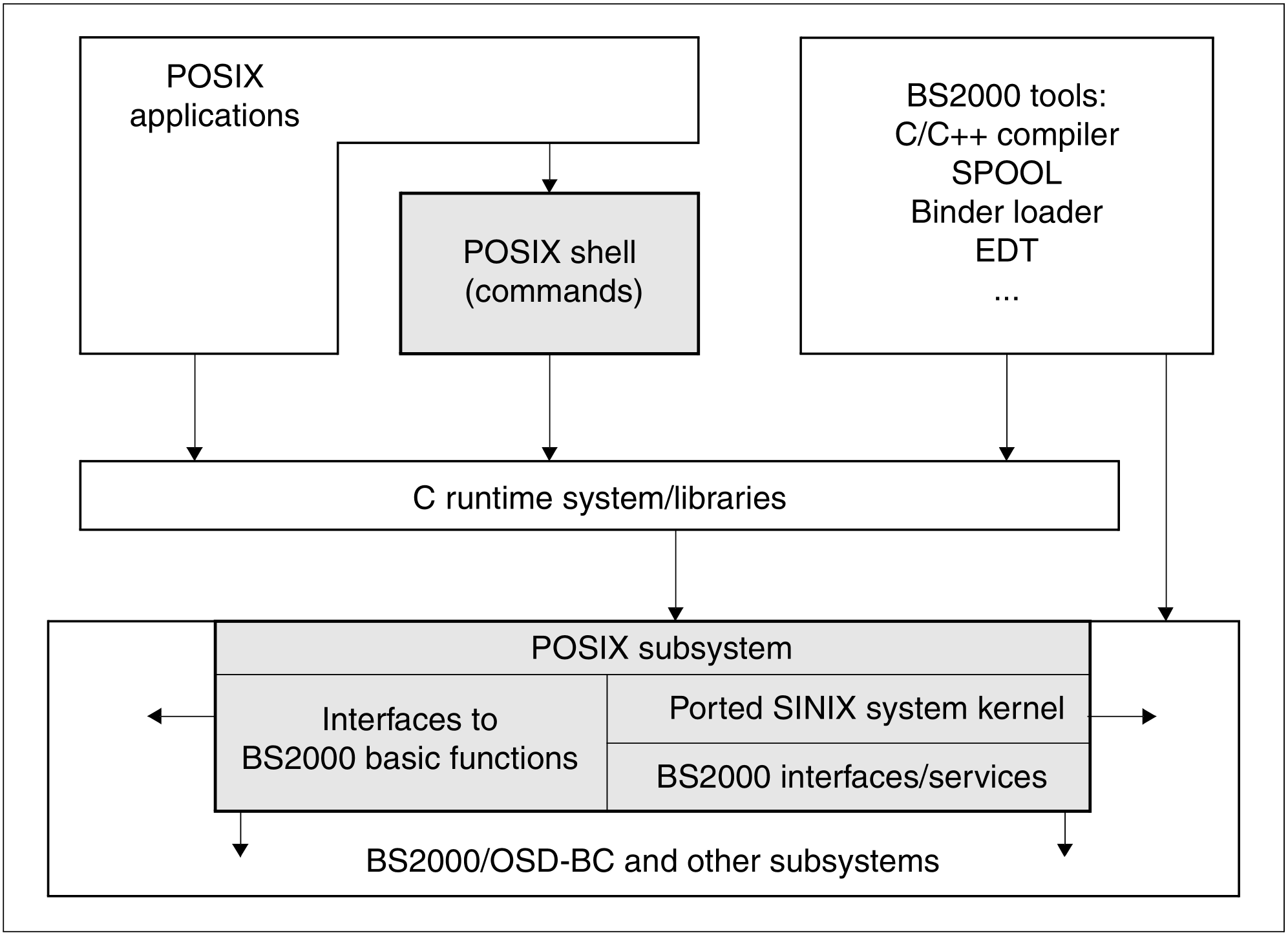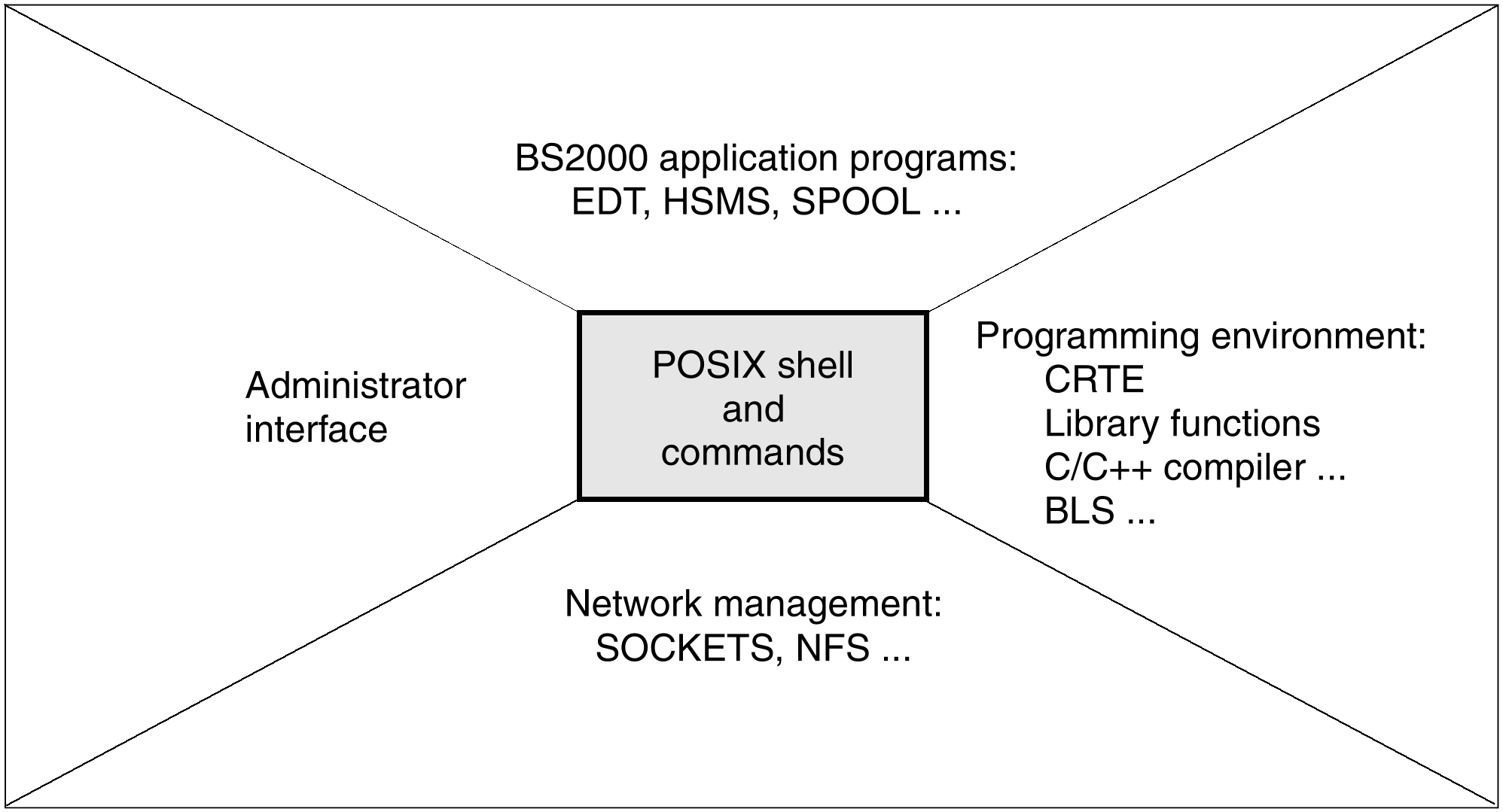The POSIX shell is the interface which connects you to the POSIX subsystem via the
C runtime system/libraries.
The figure 1 illustrates the structure of POSIX in BS2000 and the integration of the POSIX shell.
Figure 1: Structure of POSIX in BS2000 and integration of the POSIX shell
The POSIX shell is a command interface which you can use in addition to the BS2000 command interface (see figure 2).
When you have successfully accessed the POSIX shell, you may use all the commands of the POSIX shell. After leaving the POSIX shell you may again enter BS2000 commands.
Figure 2: The POSIX shell command level
The POSIX shell reads commands from a terminal or from a file in the POSIX file system, interprets them in accordance with certain rules and is responsible for their execution. A file which contains commands for the POSIX shell is called a shell procedure (shell script).
The operation and performance of the POSIX shell depend on whether the terminal at which the user is working is a block or character-mode terminal.
The POSIX shell provides you with a comprehensive command language which you can use like a programming language. You can use the available commands to create your own programs which you can then run without the need for prior compilation.


